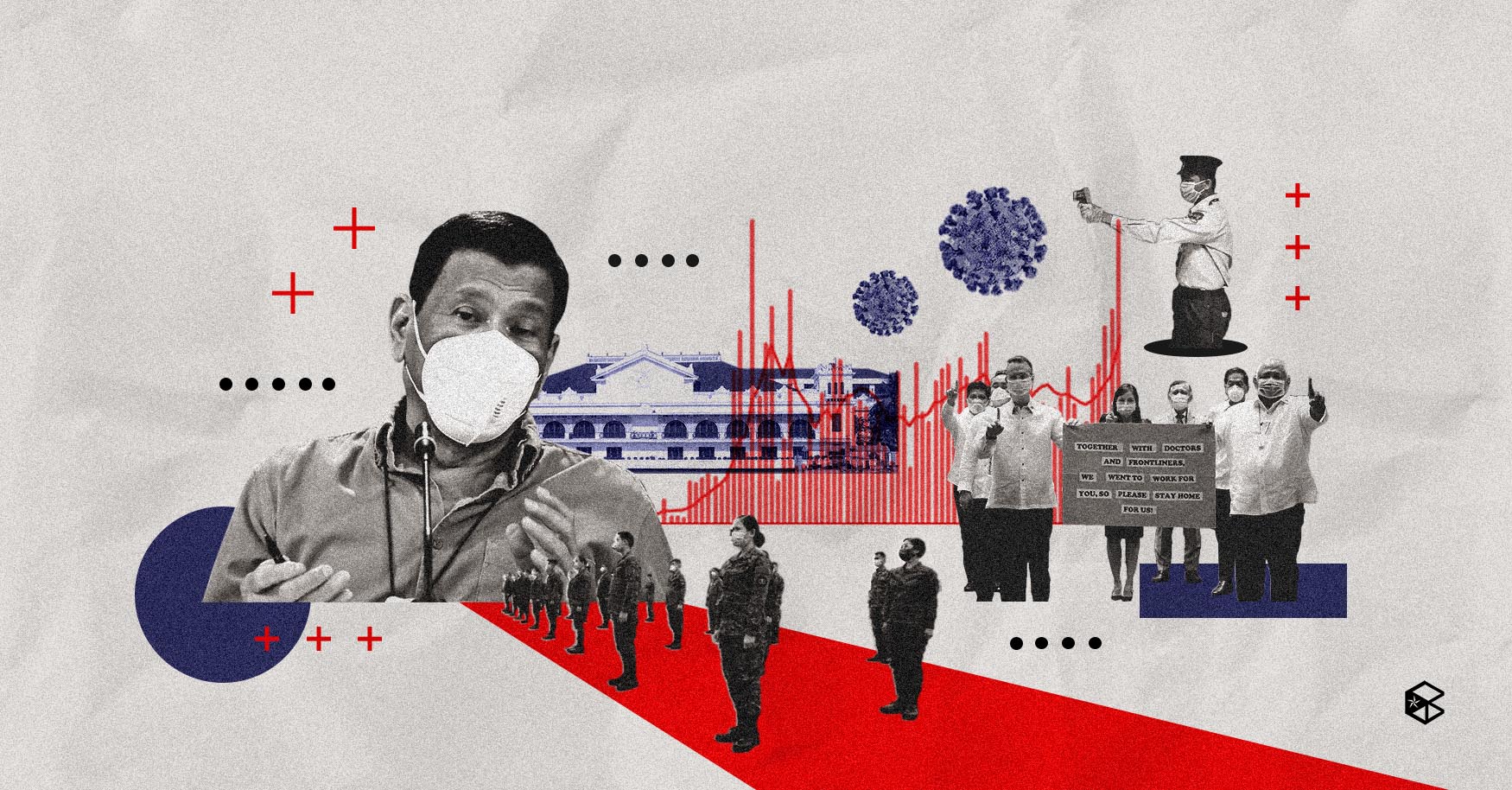Filipino citizens have complied with one of the longest and strictest community quarantines in the world—a dominantly militarist approach amid the global threat of COVID-19. The government has been criticized due to its late response in implementing a travel ban, overdue mass testing, and lack of concrete plans in combating the virus. However, President Rodrigo Duterte’s response to the health crisis leaned towards classic strongman tactics, earning a reputation of being full of incompetence and rife with terrors.
After the World Health Organization (WHO) declared an international public health emergency due to COVID-19 outbreak on January 30, various senators and representatives such as Congresswoman Loren Legarda, Senate President Pro-Tempore Ralph Recto, senators Joel Villanueva and Christopher "Bong" Go supported a proposal by Senator Risa Hontiveros on implementing a temporary travel ban from and to China with the aim of preventing a local outbreak of the COVID-19.
“We [the Philippines] are clearly incapable of handling [a] crisis. Wouldn’t it be prudent [for the government] to be proactive and ban temporarily mainland tourists in any port, not only Wuhan?” Congresswoman Legarda said during a plenary session last January 29 in the House of Representatives with Health Secretary Francisco Duque III.
What will China think?
Despite the call for the travel ban, Duque countered, "If we do this [travel ban], then the concerned country, China in this case, might question why we're not doing the same for other countries that have reported confirmed cases of novel coronavirus.”
Duque insisted that a travel ban is unnecessary as the country, as of January 29, has no confirmed cases of COVID-19 yet, but there are 23 People Under Investigation (PUIs). However, as of January 29, with over 6,000 cases of the confirmed COVID-19 cases in 18 countries, 5,972 of these with a total of 132 deaths are from mainland China. Moreover, according to Senator Francis Pangilinan, a total of 1,626,309 Chinese tourists visited the Philippines from January to November 2019 alone, thus a proposal of travel ban to and from mainland China was raised immediately.
Despite the plea of various legislators to prevent the virus from entering the country and amid global scare of the virus, the Philippine Government still refused to ban travels to and from mainland China. Only then a day after the first confirmed case of COVID-19 in the Philippines that President Duterte ordered a travel ban from and to China’s Hubei province, where COVID-19 originated.
Mass testing: it’s long overdue
With over 436, 345 confirmed cases as of December 4, 2020, the Malacañang Palace admitted that the government could have done an immediate expansion of testing.
“If I were to look back and what we could have done better [..] noong nagkaroon tayo ng unang kaso ng imported case ng COVID, dapat pinalawak na natin ‘yung ating testing capacity kaagad,” Presidential Spokesman Harry Roque said in a press briefing last July 9.
Palace aimed to increase its testing capacity up to 30,000 daily, however mass testing was put in the hands of the private sectors to conduct, "In terms of mass testing na ginagawa ng Wuhan na all 11 million [residents], wala pa pong ganyang programa at iniiwan natin yan sa pribadong sektor," Roque said.
Given the delay in implementing a travel ban to contain the source of the virus and prevent a local outbreak, the government chose to wait for the first positive case in the country before acting upon it, which now the country is not capable of combating.
With the given situation, rather than imposing hard community quarantines and militaristic approach solutions while waiting for a vaccine to be available over-the-counter, according to WHO, an improved health protocol and strengthened health-based solutions to help flatten the curve is what the country needs.
Unfortunately, instead of prevention, the only way out now is a cure.
This article is also published in The Benildean Volume 6 Issue No. 3: Translate.


